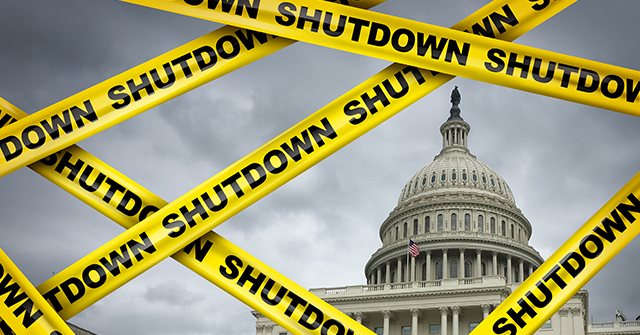The potential for a federal government shutdown due to the expiration of funding authorization on December 21 seems unlikely to pose a significant threat to the U.S. economy. Historical context is provided by the lengthy shutdown that occurred between late 2018 and January 2019, often described as the costliest in U.S. history. This 35-day impasse was primarily a consequence of political disputes over funding for a border wall, leading to approximately 800,000 federal workers being furloughed or working without compensation. The Congressional Budget Office (CBO) estimated that this shutdown resulted in an economic impact of $11 billion, including about $3 billion in permanent GDP loss, which, when viewed against the backdrop of a $21.4 trillion economy, represents an insubstantial fraction—essentially a rounding error, resulting in less than the equivalent of a single day’s output lost.
Interestingly, the aftermath of the previous shutdown saw a stronger-than-usual economic performance, similar to what historically follows recessions, suggesting a degree of resilience in the economy. The CBO’s analysis indicates that only around $3 billion is permanently lost, emphasizing the idea that the economy tends to recover quickly from such disruptions. It’s worth noting that the shutdown might even yield unexpected benefits—slower growth in government spending could spur innovation and efficiency as businesses and individuals adapt to meet needs without government assistance. The minimal estimated economic cost of a shutdown implies that even modest gains in efficiency could offset any losses, leading to net positive outcomes.
Speculating on future shutdown scenarios, it is likely that any resulting shutdown could be short-lived, especially considering the political landscape shift expected with the new Congress beginning January 3, 2025. The Republican majority in both chambers may facilitate renewed funding legislation. If a shutdown were to persist until Trump’s return to office on January 20, the anticipated economic impact might be somewhat greater than previously experienced due to the expanded role of government spending, which now constitutes around 23.4 percent of GDP, compared to approximately 21 percent during the last significant shutdown.
Despite the potential for economic drag, any downturn would likely be temporary, and the subsequent resumption of government demands would quickly restore economic activity. Such a scenario might inadvertently alleviate inflation pressures in the short term, enabling supply chains to recover and ultimately supporting stability. Political implications are also noted: if economic struggles coincide with the tail end of Biden’s presidency while a resurgence follows under a Trump administration, it could be construed as an end to “Bidenomics,” shifting perceptions of economic management significantly.
Market reactions during past shutdowns typically tell a different story, with investors appearing resilient or even optimistic. The S&P 500 saw gains during both the 2018-2019 shutdown (10.3 percent) and the 2013 event (3.1 percent), suggesting that markets are not adversely affected and may even thrive amid uncertainty. This challenges the conventional wisdom that government dysfunction negatively impacts financial markets. Therefore, lawmakers deliberating on future funding legislation can approach decisions regarding government operations with less concern about immediate job loss, wage drop, or significant growth impacts; the broader economic landscape remains fundamentally robust.
In summary, the prospect of another government shutdown should not incite fear over economic stability. Reflecting on previous shutdowns indicates that the overall economic consequences are typically minimal, and in some instances, might even encourage growth through improved efficiency and recovery dynamics. Given the current political climate, any disruption from a shutdown is likely to be short in duration and relatively inconsequential in the larger economic picture. A focus on the potential for innovation during periods of constraint suggests that our economic fundamentals are sufficiently strong to withstand temporary interruptions, reinforcing the resilience of the U.S. economy.

